Brush Traction was a manufacturer and maintainer of railway locomotives in Loughborough, England whose operations have now been merged into the Wabtec company's Doncaster UK operations.
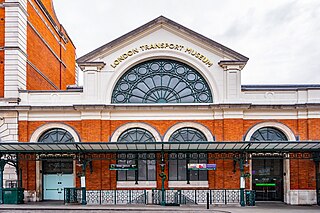
The London Transport Museum (LTM) is a transport museum based in Covent Garden, London. The museum predominantly hosts exhibits relating to the heritage of London's transport, as well as conserving and explaining the history of it. The majority of the museum's exhibits originated in the collections of London Transport, but, since the creation of Transport for London (TfL) in 2000, the remit of the museum has expanded to cover all aspects of transport in the city and in some instances beyond.
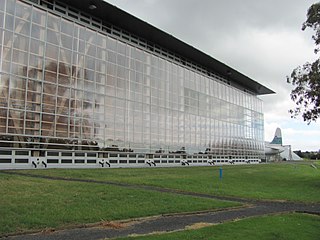
The Museum of Transport and Technology (MOTAT) is a science and technology museum located in Western Springs, Auckland, New Zealand. It is located close to the Western Springs Stadium, Auckland Zoo and the Western Springs Park. The museum has large collections of civilian and military aircraft and other land transport vehicles. An ongoing programme is in place to restore and conserve items in the collections. This work is largely managed by volunteers but, since the passing of the Museum of Transport and Technology Act in 2000, has been supported by full-time professional museum staff. New public programmes and facilities now promote the collections.
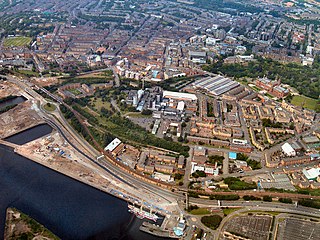
Yorkhill is an area in the city of Glasgow, Scotland. It is situated north of the River Clyde in the West End of the city. It is known for its famous hospitals and remains the location of the West Glasgow Ambulatory Care Hospital.

The Kelvin Hall, located on Argyle Street in Glasgow, Scotland, is one of the largest exhibition centres in Britain and now a mixed-use arts and sports venue that opened as an exhibition venue in 1927. It has also been used as a concert hall, home to the Kelvin Hall International Sports Arena to 2014, and from 1988 to 2010, Glasgow's Museum of Transport. As part of the economic redevelopment of Greater Glasgow promoted by the Scottish Development Agency and local authorities to enhance the city's tourist infrastructure and to attract further national and international conferences, the Scottish Exhibition and Conference Centre was designed as the Hall's successor for exhibitions and entertainments, built in 1983 and opened on the nearby Queen's Dock in 1985 with an exhibition area equal in size to the Kelvin Hall but with the benefit of extensive car parks and land for other complementary buildings. The Hall is protected as a category B listed building, and is served by city bus services and by Kelvinhall subway station.
Dick, Kerr and Company was a locomotive and tramcar manufacturer based in Kilmarnock, Scotland and Preston, England.

A & J Inglis, Ltd, was a shipbuilding firm founded by Anthony Inglis and his brother John, engineers and shipbuilders in Glasgow, Scotland in 1862. The firm built over 500 ships in a period of just over 100 years. Their Pointhouse Shipyard was at the confluence of the rivers Clyde and Kelvin. They constructed a wide range of ships, including Clyde steamers, paddle steamers and small ocean liners. In wartime, they built small warships, and in the period after World War II, they built a number of whalers.
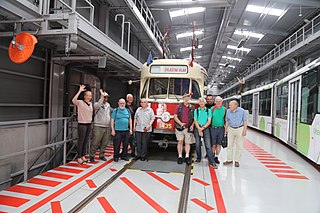
The Scottish Tramway and Transport Society was founded on 27 June 1951 and was the firsty society in the United Kingdom dedicated to tramway retention and preservation. Until 1983 it was known as the Scottish Tramway Museum Society. The Society was originally formed by tramway enthusiasts, mainly living in the Glasgow area, with a view to preserve a Glasgow "Room and Kitchen" type single deck tramcar No. 672 of 1898. The Society was less successful in attempting to preserve an Aberdeen tram. Tram 73 was Aberdeen's last double deck tram with an upper-deck balcony; it was stored for two years until lack of resources led to its scrapping in 1956.

A tram engine is a steam locomotive specially built, or modified, to run on a street, or roadside, tramway track.
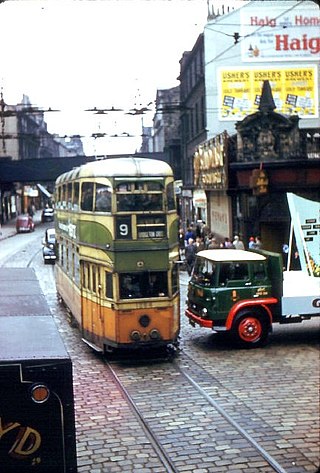
Glasgow Corporation Tramways were formerly one of the largest urban tramway systems in Europe. Over 1000 municipally-owned trams served the city of Glasgow, Scotland, with over 100 route miles by 1922. The system closed in 1962 and was the last city tramway in Great Britain.

Leeds Corporation Tramways formerly served the city of Leeds, England. The original trams were horse-drawn, but the city introduced Britain's first overhead-powered electric trams in 1891, and by 1901, electrification had been completed. The tramway opened on 29 October 1891.

The Glasgow trolleybus system operated in and immediately surrounding the city of Glasgow, Scotland, between 1949 and 1967, with the network reaching its largest extent in 1959. It was the only British system to open after World War II.

Summerlee Museum of Scottish Industrial Life is an industrial and social history museum in Coatbridge, North Lanarkshire, Scotland. It is situated on the site of the Victorian Summerlee Iron Works and the former Hydrocon Crane factory. The main Hydrocon factory building became the museum’s exhibition hall but it has been substantially changed and adapted since. The museum aims to show Lanarkshire's contribution to engineering, mining, steel working, weaving and farming, and also show the lives of the people of the area. It includes interactive displays and a temporary exhibition space. Entry is free of charge.

The city of Glasgow, Scotland is particularly noted for its 19th-century Victorian architecture, and the early-20th-century "Glasgow Style", as developed by Charles Rennie Mackintosh.

Hurst, Nelson and Company Ltd was a railway rolling stock manufacturer based in Motherwell, Scotland. The company also built many railway wagons, as well as trams and trolleybus carosseries for several local authorities.
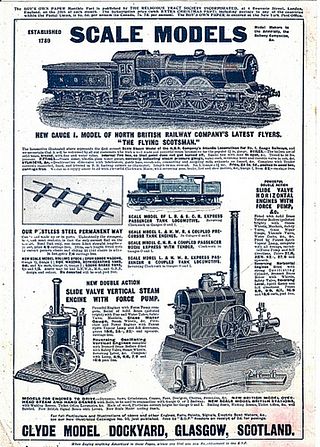
The Clyde Model Dockyard was a famous toy and model shop in Glasgow. Established in 1789, it was located at 22–23 Argyll Arcade. The firm manufactured a range of boats and sailing yachts, but were probably best known for their 0 scale model railway stock and accessories.
Zaha Hadid Architects is British architecture and design firm founded by Zaha Hadid (1950–2016), with its main office situated in Clerkenwell, London. After the death of "starchitect" Hadid, Patrik Schumacher became head of the firm, at the time with a staff of 400 with 36 projects across 21 countries.

Dundee and District Tramways operated a tramway service in Dundee between 1877 and 1899.

The G&SWR 5 Class were 0-6-0T steam locomotives designed by Peter Drummond for the Glasgow and South Western Railway (G&SWR) and introduced in 1917. The class was originally designated 5 Class but, after the G&SWR's 1919 renumbering, this was changed to 322 Class. After passing to the London, Midland and Scottish Railway (LMS) in 1923 they were given power classification 2F.
The Kelvin Valley Railway was an independent railway designed to connect Kilsyth, an important mining town in central Scotland, with the railway network. It connected Kilsyth to Kirkintilloch and thence over other railways to the ironworks of Coatbridge, and to Maryhill, connecting onwards to the Queen's Dock at Stobcross.
































